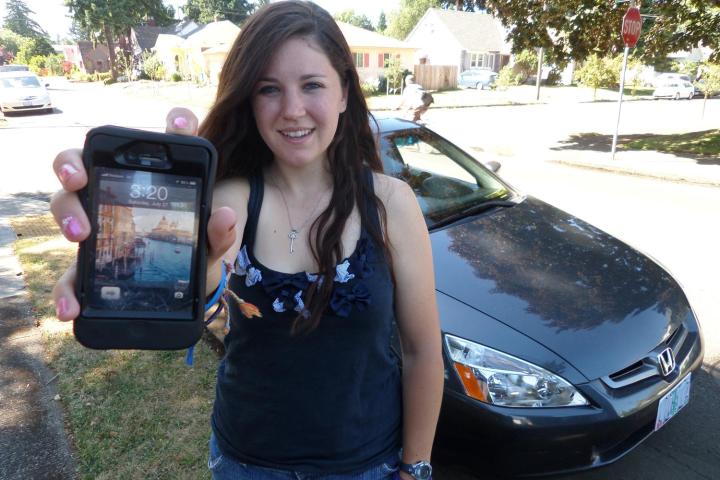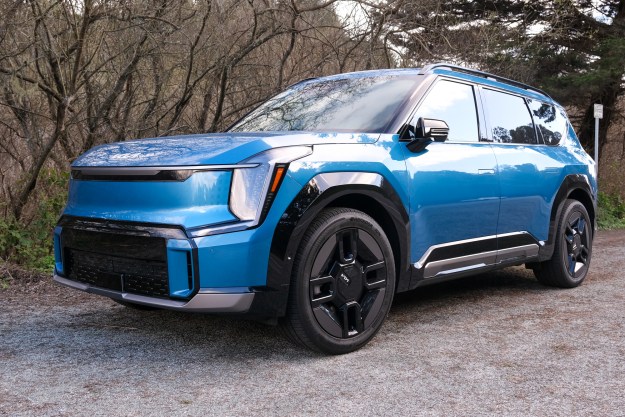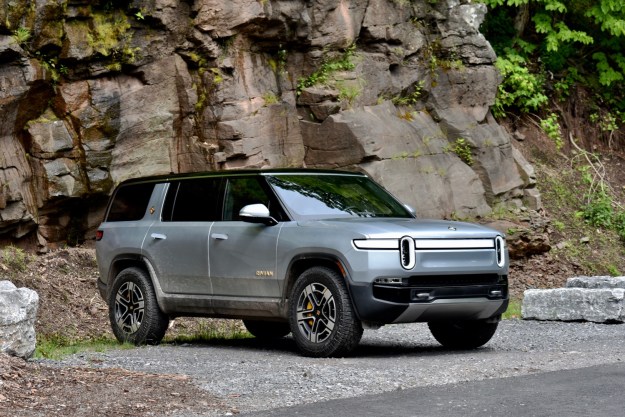
Why aren’t young people driving or getting their driver’s licenses, and by extension, buying cars? Teens and young adults started holding out on getting their golden ticket to motorized freedom in about 1984, according to an article in The Atlantic, and there are several reasons why that trend started and is increasing today.
When my niece turned 16 in 2008, family members braced for the inevitable: successful completion of her driver’s test and her first solo forays out onto the open road, where teens hook up, make out and to the greater worry and sleep deprivation of their parents, get hurt or killed.
But 16 went by with no license, then 17, and then 18. Was she ill? Scared? Confused about life’s priorities? No, it turns out she was perfectly normal and part of the growing trend among young adults who have decided for a variety of reasons that driving a car, buying a car, or even getting a license, is not a high priority.
While a teen in 1984 could sling burgers for a summer and reel in a reliable but lowly Honda for $750 right before school started back up, students today can’t really touch a reliable car for less than $3,000 or so. That’s beyond the reach of most minimum wage jobs after taxes and other expenses – like cell phone bills.
Digital Trends sat down with three young women recently and talked to them about the importance of cars, transportation in general, and technology, namely cell phones. Mary Shannon is 20, has had her license for just a month but does not own a car while her sister Maggie was just a week shy of her 18th birthday at the time of the interview and does not have a license. Their friend Morgan is 21, got her license at age 19 and also drives, but does not own, a 2006 Honda Accord. Each woman owns a cell phone, has an email account and a Facebook page.
1. The rise of mass transit
The rise of widespread and reliable mass transit systems was a common theme through the interviews. Before the 1980s, taking the bus was still stigmatized as something the unwashed masses did because they couldn’t afford a car. But after the oil scares in the 1970s and into the 1980s, that began to change as transit systems modernized, expanded and sometimes came to include modern light-rail systems that could move large numbers of people longer distances quickly, much as the systems in Europe and Asia had been doing for decades.
Being in Portland, the mass transit factor may have skewed our subjects a bit as the city has an award-winning transit system that includes buses, electric street cars and light rail trains. A stated goal of the transit authorities has been to get people out of their cars and off the roads to ease traffic congestion. While nightly rush hour traffic snarls persist, it seems they have largely achieved their goals of weaning large numbers of young people and others off the daily need for cars.
Mary Shannon, when asked why she waited until 20 to get her DL, wasn’t shy about getting on the bus. “I just wasn’t motivated” she said. “I took the bus a lot, so I didn’t find it important to practice driving at the time.” She also said she was away at college where she didn’t really need to drive and waiting wasn’t a big deal.
All three women said they used mass transit to get around.
Also, Portland has a robust and hip bicycle scene, much of which is made up of young people pedaling around on fixies and pannier-equipped city bikes that are as much a statement of modern style as cars have traditionally been. However, none of the three women I interviewed were avid cyclists. But all of them utilized mass transit.
2. The parent taxi
Parental transportation of teens is another reason many young people hold off on getting their license or a car, and from a young person’s perspective, it makes good sense. Why go to the expense of driving your own car when your parents will give you a lift? This is a transportation avenue for young people that has grown over the last few decades as parental control and involvement with their kids’ lives has increased along with teens’ ambivalence toward driving.
Mary Shannon’s sister Maggie, who has a permit but no license and was days away from turning 18, said she wants to get her license but due to a combination of her school activities that limit her time in the driver’s seat and limited testing windows at the DMV, she hasn’t been able make it happen yet. Additionally, she said her mom drives her to school and she gets home either by “getting a ride from a friend or taking the bus.”
For Morgan, the reasons for waiting in getting her license were slightly different but she had the same solutions. When she was 16 and eligible to get her license, she said she initially wanted to get her license but “I was terrified to drive,” she said. “I didn’t see a need for it because my parents drove me everywhere. and my friends had licenses so I could drive around with them.” She said she also didn’t want to pay for the driving portion of driver’s education “because I just didn’t want to drive.” In college and faced with the need to drive as part of her school work, she passed her test “and now I’m just so glad I did,” she said.
3. Alt-transit
More and more, young people are combining mass transit with walking, cycling and even skateboarding instead of cars to get around. Portland in particular has a robust and hip bicycle scene, much of which is made up of young people pedaling around on fixies and pannier-equipped city bikes that are as much a statement of their personal style as cars have traditionally been. All three of the three women I interviewed had bicycles, but were not avid cyclists.
Additionally, young people are able to utilize their ever-present cell phones to hail a ride from that other free taxi, a friend.
4. The high cost of driving (plus the boredom of it)
Owning a car today – any car – isn’t cheap, or at least not as cheap as it was. Back in 1984, you could spend $1,000 on a not-fancy but drivable car and it was relatively affordable since gas was $1.21 a gallon. Add some friends who would pitch in and a road trip was not out of the question. Not anymore. Now, with gas constantly hovering around $4 a gallon and $60 to fill up and insurance companies charging over $1,000 a year to insure a teen or 20-something driver at the most basic of coverages, cars have become a major expense point.
Morgan, 21, was given her Honda by her parents, who technically own it, even though they live a thousand miles away. They pay for her insurance as well. Most young people don’t have those financial cushions, so it makes more sense to get around by bike, Nikes, mass transit or a catch a ride than burn cash on a car and the associated expenses.
Additionally, most cars young people drive today are not something you would call “exciting” unless trying to squeeze 40mpg out of a tired 1995 Civic VX gives you grins. The old muscle cars are all gone now, shined up and sitting undriven in collectors’ garages. Driving on a budget has become a lot less fun as cars have become safer, more efficient but also dull as sand. If I was a young adult, I’d get a scooter.
5. The phone factor
Finally, this latest generation of young potential drivers are living in a period unlike anything previous generations could have imagined: that of extreme connectivity. Of the three women, all had cellphones while only Morgan had a smartphone (an iPhone 4). The other two girls had modern flip-style phones with keyboards for texting. All of the women got their first cell phones in about 8th grade.
While having a car was status and freedom for generations past, the modern cell phone, Internet and the instant connectivity they engender are the new freedoms. There’s no need to hop in a car and drive to someone’s house or the Quick-E-Mart parking lot to be seen and get the latest scoop. That’s what Facebook, Twitter, text messaging and Google hangouts are for, and much of it is free or close to it. It’s also instantaneous and does not require trips to the DMV, DEQ or gas station.
Morgan said she sees her smartphone as helpful in emergencies, for finding information and for connecting with other people. She also said paying for gas for the car “stinks.” But Morgan was the only woman of the three to have a smartphone. “Once you get a smart phone, you can’t go back, there’s so many things about it you revolve your life around” she said, citing her use of apps for movie times and bus schedules she often used before she got her car. “Also, I don’t think I could have gotten my car or my license without my phone GPS because I get lost so much,” she added. “I’m terrified of getting lost.”
“Pretty important” is how Mary Shannon described her phone, a basic non-smart phone she called “a dumb phone.” She uses it to coordinate rides, network with friends and get babysitting jobs. Her sister Maggie was less addicted. “I think people tend to think their phones are more important than they really are,” she said. She said she sometimes goes days without using hers because she can’t find her charger and “it’s kind of nice” not to have to deal with constant communication. “It’s less ADDish,” she said of being phone free for stretches.
But if placed in a position where they had to choose a phone or a car, which way would they go?
“I feel we rely on our technology too much,” Mary Shannon said, opting for a set of wheels over her phone. “I suppose it’s easier to borrow a friends’ phone than their car,” she added. Maggie agreed, saying a nice car easily trumps a phone and she can do much of what she needs to do online from a computer. “You can always borrow someone’s phone,” she said.
Even Morgan said she’d let go of her beloved iPhone before her car since she needs the car as part of her college education to become a teacher. She is required to teach part time at grade schools not served by mass transit, so a car is pretty important to her.
Car lust lives on
All three women said most of their friends had their driver’s licenses and some had cars, but most all of them drove cars provided by their parents instead of owning one outright. “I don’t know anyone that saved up for their own car,” Morgan said.
We also talked about what kind of cars each woman would own given the choice. Surprisingly, the answers came quickly. Mary Shannon was pretty open to a new set of wheels as long as it’s “a smaller car with good gas mileage. And seat heaters” since she attends college in Montana. Audi convertibles were high on her list.
Her sister Maggie is a fan of “old Mustangs” and other old muscle cars. And while Morgan has a 2007 Accord, she would trade it in for a classic Mustang given the chance “but I don’t think I deserve one because I couldn’t take care of it,” saying she did not have much mechanical knowledge. “But I think they’re gorgeous,” she said. Volkswagen Jettas were high on her list before she got her Accord, but after she got the Honda “I just fell in love with it. It’s been a really great car.”
What about electric cars? The women admitted they did not know much about them. “Hadn’t really thought about it, but yeah, probably,” Mary Shannon said. Maggie immediately voiced concerns about range but admitted she knew little about them. Morgan said she might make the switch if the car had more range as she often drives from Portland to Sacramento where her parents live, a 10-hour drive. She said she’d bring more batteries with her, perhaps illustrating a common misconception about electric cars, which only have one battery (at least right now).
But Morgan said she loves of the idea of an autonomous car and would be “first in line” to buy one if they ever become available. “I hate driving, but I do it because I need to” she explained. Both Maggie and Mary Shannon disagreed, saying that if they had cars of their own – any kind of car – road trips would be on the agenda.
It seems the call of the open road and the dream of car ownership is still a driving force for many but not all young people today.


